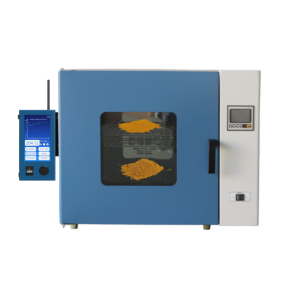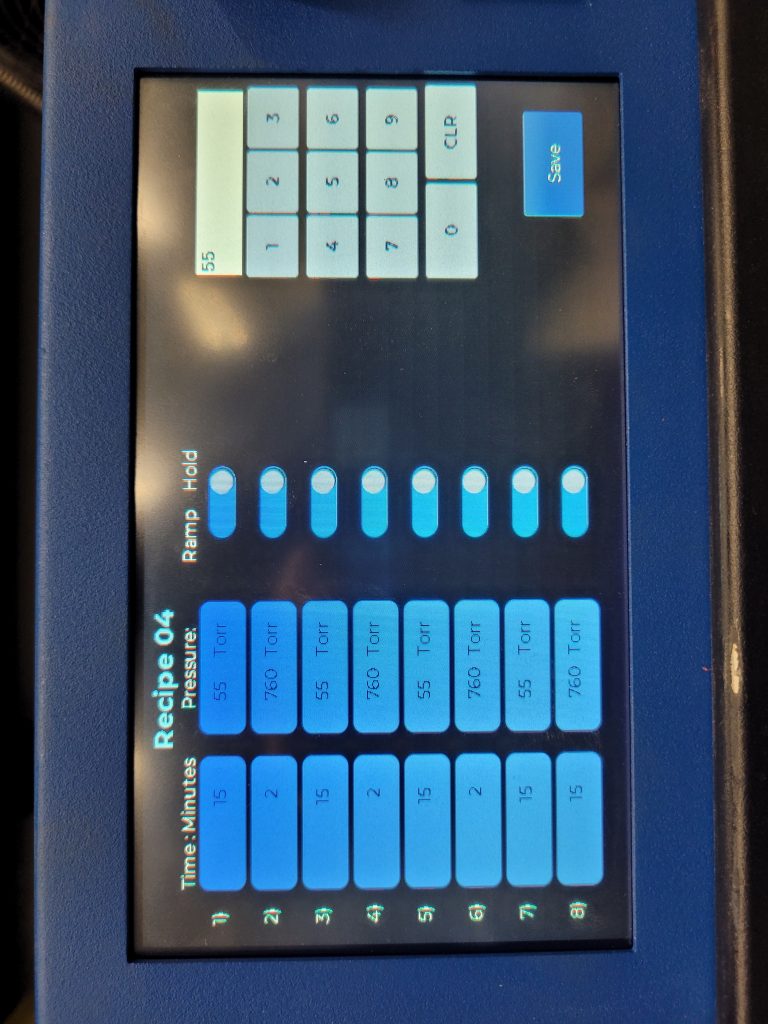Onsite Case Study | Vacuum Drying Polymers
How SNAP Optimizes Vacuum Drying for Polymers

How DigiVac helped Chroma Color solve issues with vacuum drying polymers
The purpose of our visit was to help them optimize their vacuum drying equipment that they recently purchased from DigiVac. Previously, they had been using a forced air oven that took 24 hours to dry their product. They were looking to optimize and reduce the time and energy needed to complete the drying process. They made the switch to using a vacuum oven for vacuum drying polymers. With the new setup, dry times were down to 2 hours even before optimization.
Chroma Colors is in the business of providing color concentrates to manufacturers of products that have colorful plastic branding needs. DigiVac was first engaged with them to address their drying challenge, and through a bit of research found that many plastics can benefit from vacuum drying to speed up the drying process. Some plastics or polymers are more polar, which can bind water molecules more strongly. If too much water is present in their polymers, then the resulting film (end product) can be cloudy, or have bubbles. Using a vacuum oven enables the drying to happen quicker, with the added benefits of needing less heat (better for heat sensitive polymers) and requiring less power (energy).
The Issue
The first thing we did was troubleshoot their setup. We found that the vent valve on the oven was open, which prevented the oven from reaching a very low base pressure. We also discussed how an operator can use the SNAP to simplify the starting, stopping and automating of the process.
Also, we created recipes to try to empirically determine the best drying pressure and time curves. We also created a Diagram to highlight some of the recipes to describe how they work. The ability to run these recipes is typically reserved for $100k machines of this type, but the SNAP brings this capability to any vacuum chamber or oven.
In order to determine dryness of the polymer, they use a destructive method for determining moisture content using an Ohaus MB45 instrument. This is the tool that they used to determine that the vacuum drying oven did a better job drying plastics then the forced air oven they previously used. The current version of this tool is the MB120, and retails for $5000.
A few notes on their process:
- It’s important to dry the pellets (polymers) before you infuse them with the pigment, and sometimes after too.
- If you don’t take out the moisture in the pellets, the resulting film can look cloudy, and have bubbles.
Conclusion
The next steps for further optimizing this process would be to experiment with different time, temperature and pressure profiles to determine the optimal recipe for ultimate dryness, and the optimal recipe for quickest drying that is sufficient. A further improvement for determining how dry the pellets are in-situ may be implementing our end of drying solution. This can be installed onto any vacuum oven or vacuum chamber and may provide an indication of how dry the pellets are without having to do a destructive test. However, this would have to be validated against their known standard that it does give the information in an easier way than their current destructive method.
Interested on how you can optimize your process and efficiently using Vacuum Drying in your lab? Check out our Vacuum Ovens here!
SNAP Vacuum Drying Polymer Setup






SNAP Applied
Watch how SNAP was used at Chroma Color !

